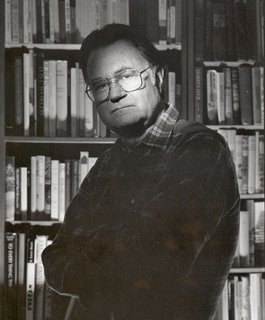Cyril Belshaw & The Wondrous Chinese Spoon
Sunday, October 05, 2008
Chinese soup spoon, in japanese "fallen lotus petal" — usually ceramic and of a distinct Chinese soup spoon shape, which can vary in size from normal soup spoon size to near-platter size.
In 1950 when I was 8 years old my mother took me to the house of one of her Chinese students at the American School in Buenos Aires. For someone who had only seen white people and the accasional darkish Bolivian or Argentine aboriginal this was as exciting as things got. Unfortunately I was also an Argentine meat, potato and salad kind of boy and the prospect of being offered exotic food was downright scary. And scary it was. I did a lot of drinking of water to wash down food of uncertain origin. But I was fascinated by my first glimpse of the lovely Chinese spoon. I have been delighted and fascinated by it since. The design of the spoon would blend in with anything from Bauhaus.
Sometime in the early 80s I was dispatched by Vancouver Magazine to photograph UBC Professor of Anthropology, Cyril Belshaw. Through his friend Don Stanley, associate editor at Vancouver Magazine, Belshaw had granted Vancouver Magazine an exclusive interview right after he had been found innocent in European courts of murdering his wife.
I decided before I got to Belshaw's house (I had been forewarned not to disclose his address to anybody) that I was going to photogrpah his face and hands separately and leave it up to the Vancouver Magazine readers to decide if indeed he was a murderer or not. But when I got there and he opened the door I was met by a quiet spoken man with a tragic expression on his face. He was visibly nervous about the approaching ordeal of being photographed. "Don't tell anybody I live here. If they find out they will stop and point in this direction and say, ""He lives there.""
I had to find a way of making him feel comfortable as this has always been my course of action. He had agreed to be photographed so it was up to me to help him even though I had an ulterior motive up my sleeve in reference to his hands.

To help him relax I decided to ask him a question to which I had never received a satisfactory answer. "Sir, why is it that the Japanese adopted many of the customs of the Chinese, and went as far as copying their writing, and using the Chinese chop sticks, yet they never copied or used the Chinese spoon? We do know that the Japanese slurp their liquids and the spoon they finally adopted was the Western spoon." Belshaw's answer was a simple one but a startling one, "Cultures have always been known to selectively adopt and adapt only what interests them from other cultures. They, the Japanese were not interested in the spoon so they did not use it."
After this explanation I sensed a release and determination and Belshaw faced my camera. I quickly turned off the light that was pointed at his hands and took my portrait. I felt that the lighting of his hands would have overstepped my duty of being as objective as possible. If a court had found the man innocent I had no right to editorialize and cast any suspicion.







